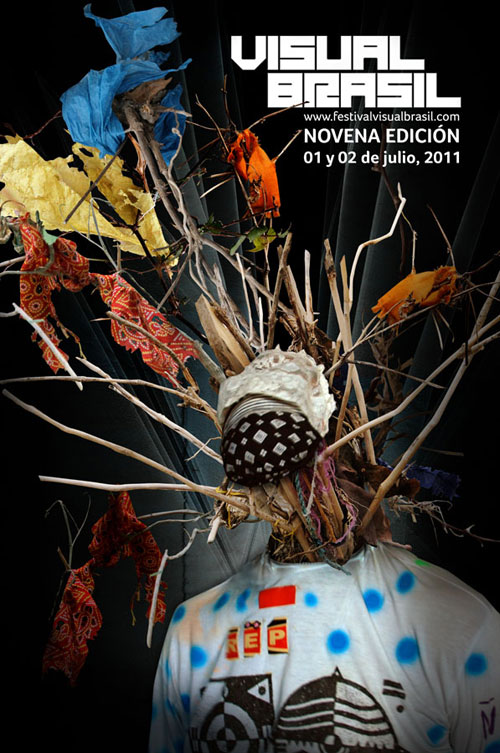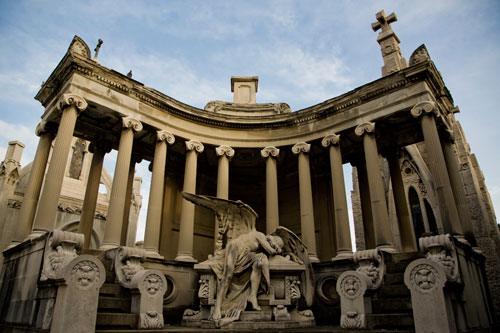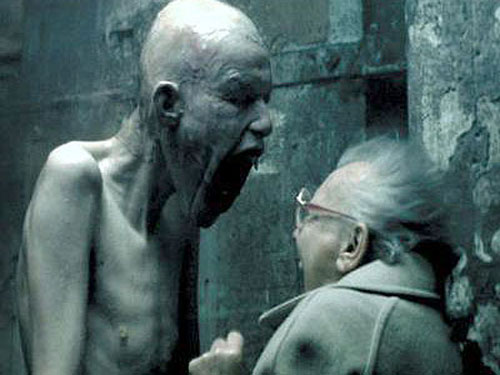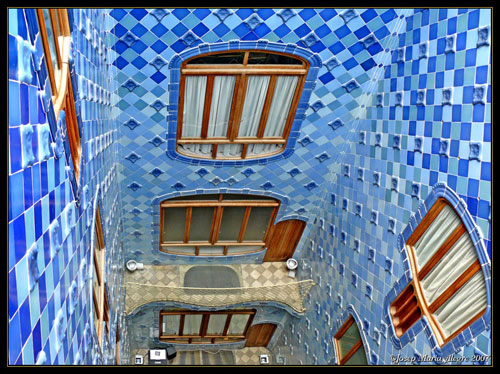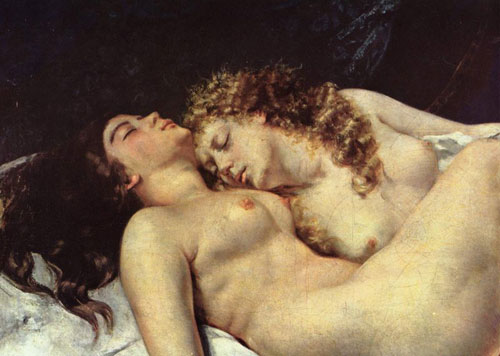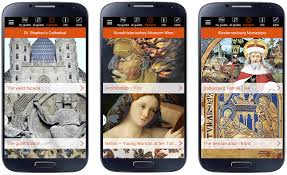ONLY BE BARCELONIAN
Only-Be Barcelonian
Gabriel Garcia Marquez
“On my 90th birthday, I wanted to treat myself to a night of wild passion with a teenage virgin.” This is how “Memories of my sad whores” by Nobel Prize winning Gabriel Garcia Marquez starts. An elderly man who has resolved to arrange a sexual encounter with a teenage virgin is an idea which could have alarmed the morals of literature – but in fact, it is just the starting point for an interesting approach to the understanding of sex, love, life and death. Looking through the novels which take sex as their main theme, here I find a book which though I struggled with initially, I found in the end that the world constructed by Garcia Marquez captivated me with its sincerity, and the cadence of the prose of the narrator; a narrator with a great sense of knowledge. I won´t get carried away – lets get straight to the point: The old man falls in love with the girl. Each night, he pays the madame of the brothel to be able to see her, always in the same bedroom, which he starts to decorate so that the girl feels more comfortable. But the thing which could have been shocking (an old man having sex with a poor adolescent who has resorted to prostitution) becomes strangely more and more like a love story. He doesn´t touch her – at least not with desire: he never explores her naked body. Is it possible to feel pleasure, sexual feeling without any physical contact? It seems so. The old man falls in love – just by lying next to her, and...Visual Festival Brasil 2011
The ninth edition of the Festival Visual Brazil will take place at Centro Cultural Punt Multimedia in Barcelona, over 1st and 2nd of July. Activities this year will be themed around multiculturalism, and integration through art, and how it can contribute to different modes of communication. Festival Visual Brazil was created as an event which would open space for creativity, and experimentation, developing thoughtful discussion, exchange and new ideas for audiovisual arts. Discussing art and multiculturalism might seem a complicated task, particularly because culture is all about our relations with the world, and ways of living – a social process which connects language, religion, ideology; things which are often difficult to distinguish and comprehend. However, with art, the limits of culture become diffused, producing a dialogue which facilitates a meeting between different worlds. This is made possible by the symbolic language of emotions expressed through art. In this sense, sadness, anger, helplessness, and other feelings have universal representations in different cultures. A example of this multicultural fusion is the project from VJ JAM, with the audiovisual collective Folcore from Barcelona, who have chosen to fuse the sounds on the margins of the mainstream, with ethnic music, or those belonging to African and Latin American cultures. The aesthetic objective is deconstruction in order to produce a meeting between different cultures, via a fusion of images and music. Participating in the project are VJ Eletroiman, recent winner of Festival Torna 2011 in Rome, VJ O´Video and Damian. Mastigando Humanos by Daniel Peixoto is a mixture of electronic sound with traditional tones, where the audiovisual impacts with rapid, video-clip images. It´s a...Barcelona cemeteries: Montjuic and Poble Nou
Artists, adventurers, scientists, the rich and the poor, all of them are part of the history of Barcelona and they have a special place in two of the most important necropolis of the city: the cemeteries of Montjuic and Poblenou. Poblenou was the first cementary of the city. Its history reflects the changes that took place at the end of the 18th century and at the beginning of the 19th century. The cemetery of Poblenou was divided into two sections. The first sections began to be built in 1775. The construction project of the Poblenou cemetery began thanks to the bishop of the city, who saw the need to create a cemetery, due to the fast changes in society and the problems that were emerging for public health because of the custom of burying the corpses in the churches of each neighborhood. By that time, the piece of land where the cemetery would be built was an agricultural sector, outside the walls of the city. Despite the fact that the new Spanish legislation established the construction of cemeteries far from the cities, the bourgeois population of Barcelona considered that being buried far from their own churches was dishonorable. For this reason, the first cemetery became the final resting place for the poorest and sickest people who had died in the hospitals. The second section of the cemetery was built after the destruction of the first section of the cemetery in 1819. The project was carried out by the Italian architect Antonio Ginesi. The modern section of the cemetery has been maintained up to the present day. The Poblenou cemetery...Pierre Huyghe at CaixaForum – Barcelona
CaixaForum – Barcelona has a special program for summer: From the 17th of June until the 14th of August, the exhibition Streamside Day Follies (2003) by Pierre Huyghe. Huyghe is one of the most important French video and film artists. His works are inspired in enigmas that lead the spectators to imagine certain evocative images, from which he approaches to the cinema structure. In his work Streamside Day Follies (2003), Huyghe discusses the relationship between cinema and reality, transforming fiction into a potential reality that is the consequence of a visual architecture invented by the artist. His purpose is to explore the emergence and construction of different forms of tradition and its relation with some ritualistic social expressions in the contemporary culture. This work shows images of the construction process of Streamside Knolls, an American housing complex, as well as the party that took place during its inauguration. It’s a metaphor or a reality of the modern methods for the construction of a community, including all rituals that are involved in the process. Pierre Huyghe was born in 1962 in Paris, France. He studied at the École Nationale Supérieure des Arts Décoratifs in Paris. The development of his interesting career has led him to exhibit his works at the best museums in the world. His favorite topics are madness, leisure, adventure and the celebration of creation. One of his artistic obsessions is the cinema as a generator and transformer element of memory. Perhaps his most interesting work in the field of cinema is the video based on the bank robbery that appears in the movie Dog Day Afternoon (1975)...Mitte barcelona
MITTE is an artistic space, a café, a pop-up window, all this forms MITTE-Barcelona, a lively space open to curious people.
Chris Cunningham in Barcelona
Chris Cunningham is nowadays one of the most acclaimed young visual artists in the world due to the terrifying aesthetics of his videos like “All is full of love” done for the Icelandic singer Bjork, in this video two robot-girls fall in love with each other and try to have sex, and “Frozen”, in which he turned Madonna into a flock of crows and shadows. He was born in 1970 in Reading, England. From a very young age, he fell in love with arts; first he started drawing, then doing sculptures and later photographing. He started his artistic career in the comic magazine “2000AD”, publishing works under the pseudonym of Chris Halls. Then, he participated in the creation of the special effects of “Alien 3”, “Alien: Resurrection” and “Judge Dredd”. But the project that gave him world fame was the video clip of the song “Come to Daddy” by Aphex Twin, an acclaimed composer of electronic music. In this video Cunningham challenges the imagination of the spectators while building his aesthetics in the creation of videos with endless series of monstrous and misshapen figures, where horror and terror are very close to us, they are actually totally immersed in the reality we know. As it might be easy to suppose, at the beginning he provoked a scandal in the commercial video world and especially in MTV, where there was an esthetic uniformity that was ignored by Cunningham in a very clever way. The video shows six-year-old children with adult faces running in a psychedelic city and as they hit fences with metal bars, he synchronizes the blows with the...The houses of Gaudi in Barcelona
To talk about the works of Antoni Gaudí is similar as expressing in abstract terms the love for something that transcends geometry and becomes poetic. The Catalan architect and artist left a priceless legacy to humanity and forever changed architecture with his creations. Although there are many works from Gaudí, only a few are well known and visited by tourists, especially in the city of Barcelona, who lives and breathes the timeless legacy left behind by this artist, so the following paragraphs are just a brief description of the existing buildings in Barcelona and its surroundings, which may not be as popular as the Sagrada Familia, but are of great importance in the history of the artist Among the most unknown houses of the architect we have Bellesguard. Built in a mythical location where the house of King Martin “The human” (Last King of Catalunya) was located. This house was built in 1408 and subsequently destroyed during the war. Bellesguard was built almost 500 years later and had great significance for Gaudí by this historical fact, something that is very well represented in the medieval and neo-Gothic architecture that makes the building very different from the rest of his constructions, for it is a castle that recalls this moment in the history of Catalunya. The house is located in the district of Sarria, in Bellesguard Street Another of his houses is Casa Vicens, in Carolines Street, between Fontana and Lesseps metro stop. This was Gaudi´s fist assignment after graduating as an architect, so it is perhaps the best example of this first stage of the artist, full of Muslim...Teotihuacan, in CaixaForum Barcelona
Barcelona’s CaixaForum is holding an exhibition entitled Teotihuacan la Ciudad de los Dioses (Teotihuacan, City of Gods). It is composed of around 400 pieces of pre-Hispanic Mexican art selected from some of the most important museums in Mexico. The exhibition, open until 19 June, aims to reveal the wealth of this legendary civilisation that is famous for its remarkable political system, its incredible architecture and art, as well as its mysterious disappearance. The city of Teotihuacan is located just 45 kilometres from Mexico City. In 1987 it was declared a World Heritage Site by UNESCO. Its name comes from the náhuatl tongue and means ‘the place where gods are born’. At its height, The City of Gods extended to over 20 square kilometres and contained a population of around 100, 000. Its culture spanned almost eight decades, beginning 200 years before Christ and coming to an end sometime after 700 AD. The city was organized around great monuments: the pyramids of the sun and the moon, and the magnificent Temple of Quetzalcoatl, with over 366 serpent heads representing the water goddess depicted on its four facades. Like any great city, Teotihuacan was built using urban planning. The Avenue of the Dead was designed to connect the two most important focal points for their culture: the pyramids. Teotihuacan was an incredible city: the most well constructed of any on the Mesoamerican continent, its remains reveal to us a culture with a huge political capacity for creating social cohesion on the basis of control and fear. Its vastness, standing tall in the middle of a wide valley, must have inspired admiration...The Realism of Courbet in Barcelona
For a long time, Gustave Courbet (1819-1877) was thought of as a revolutionary painter. On the one side, was his professional status as a free man, whose desire was not to depend on any form of power or religion. There was also his political activism; he was an active participant in the Paris Commune, in which he entrusted himself with the administration of the museums of the city – which resulted in a prison sentence and a subsequent period of exile. On the other side, there is the scandal caused by some of his more notorious paintings, such as The Origin of the World, a graphic depiction of sex, and female nudity – or The Dream (also known as The Two Friends, or Laziness and Lust), which shows two naked women sleeping arm in arm, as though having just slept together, with one resting her head on the other´s neck. However, probably the true revolution of Courbet´s work is not in his evident capacity to shock, and challenge the prudish, hypocritical bourgeoisie morality – but rather his way, more in line with the work of Caravaggio two centuries earlier, of opting for the truth, to the detriment of established notions of beauty; of accepting nothing but the most natural. It was one of Courbet´s exhibitions, in a shack in 1855, titled The Realism, which gave name to the entire realism movement, changing the course of modern art forever. And when Courbet painted himself in his shirtsleeves, like a vagabond, it shook the art world, for its unapologetic expression of the world as he saw it, and opened up a...Bike Rental Barcelona
Bike Rental Barcelona is specialized in bike delivery service in Barcelona. The company also offers guided tours by bicycle.

 English
English Français
Français Deutsch
Deutsch Italiano
Italiano Español
Español
